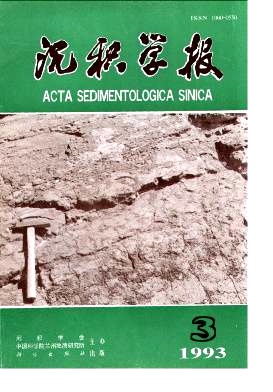Wang Duo'yun. Types and Lateral Evolution Models of Swamp Rivers[J]. Acta Sedimentologica Sinica, 1993, 11(3): 1-6.
| Citation:
|
Wang Duo'yun. Types and Lateral Evolution Models of Swamp Rivers[J]. Acta Sedimentologica Sinica, 1993, 11(3): 1-6.
|
Types and Lateral Evolution Models of Swamp Rivers
- Received Date: 1992-03-04
- Publish Date:
1993-09-10
-
Abstract
Taking the Jurassic coal seams of the sourthern margin of Junggar Basin as an example, the present paper studied the fluvial sedmentary types that developed in the grand ground surface of meta - plainized and low - steep swamp, identfied five kinds of river courses and established their lateral evolution models, they are: braided flow meandering, high meandering, braided meandering and anastomosing river. The author concluded that the Jurassic coal -forming period have the feature of balanced supplement, that is,the basin's subsiding rate is equal to the sedimentary filling rate. Sediments that loaded by the rivers steadily differentiated according to the energy law and wide spreaded evenly. No sedimentary axis could be formed under such environment, but there are various kind of rivers devloping charicterized by siginificant laterl evolution. Braided meandering river and anastomosing river that identified by the author are different from each other in the aspects of rock assemblage, the ratio of thickness of the course to its overlying fine sediments, composition of micro - facies and so on, it can be deduced that the former carried multiple loads and has the feature of lateral accretion, while the later was developed in the low land of the swamp plain and its course is narrow, its sediments are fine and dominanted by suspended loads, its sedimentation is mainly vertical accretion. These two kinds of river are the typical stream forms that developing on the background of swamp. The sedimentary cycle of Jurassic coal-bearing strata in the southern marginof Jung gar basin is similar with that of non - marine Appalachian - type in North America, both of the cycles were started by water enchrochment that resulted from the accerleration of crust's subsidance and ended with the water dereliction that caused by the retarding of crust subsiding and the startingof uplifting. In the period of Badaowan to Toutunhe, a perfect enchroachment-dereliction cycle was formed, and swamp coal were mainly formed at the beginning of enchroachment (i.e., Badaowan period) and the end of dereliction (Xishanyao period). The most widely enchroachment and dereliction were occurred in San'gonghe and Toutunhe period respectively. This regularly sedimentary cycle are dominantly controlled by the activity of the overthr ust nappe which situated in the sourthem margin of the basin,whilst the sedimentary process and lateral evolution of swamp rivers may be mainly depended on the variation of palaeomorphlogic features, topographic slope, water dinamics and the condition of plant cover. The sedimentary sub-rythms (with the thickness of 1 - 100m) that caused by the differences of course types were considered to be the basic units of the cycles of coal -bearing strata, moreover, the basic units were controlled by tectonics and climate.
-
References
|
[1]
|
柯保书薄.1991,沉积学报,9卷1期。 |
|
[2]
|
Cairncroes,B.et a1.1988.Sedimentary Geology.V. 67.D. 107-118 |
|
[3]
|
Collinaon.J. D.1986,Alluviall Sedimenta,In,Resding (ed).Sedimentary Environments and Feciee,Bleckwell Scientific Pub- lication. p.20-62 |
|
[4]
|
Graham,S. A.,et a1,1990.The American Association of Petroleum Geologists Bulletin,V. 74.p. 493-512 |
|
[5]
|
Haq,H.U.et a1,1987,Sciencea.V.235.p.1156-1166. |
|
[6]
|
Hecke卜P. H.1986. Geology. V. 14. p. 330-334 |
|
[7]
|
Hewsrd,A. P.1978.Sedimentology.V. 25.p. 451-448 |
|
[8]
|
Johnoson,S. Y.,1984.Sedimentery Geology.v.38.p.361-391 |
|
[9]
|
K1ein.G. deV.et n1. 1989,GeloIgy.V. 17.p. 152-155 |
|
[10]
|
Mia11.A. D.1977.Earth-Science Reviews V. 13.p. 1-62 |
|
[11]
|
Mial l. A. D.1985. Earth- Science Reviews. V. 22. o. 261-308. |
|
[12]
|
Mia11.A.D.1980.Bulletin of Canadian Petroleum Geology.V.28,p.59-80 |
|
[13]
|
Stewart. D. J.1981. Sedimentolog. V. 28. p. 1-20 |
-
-
Proportional views

-






 DownLoad:
DownLoad: